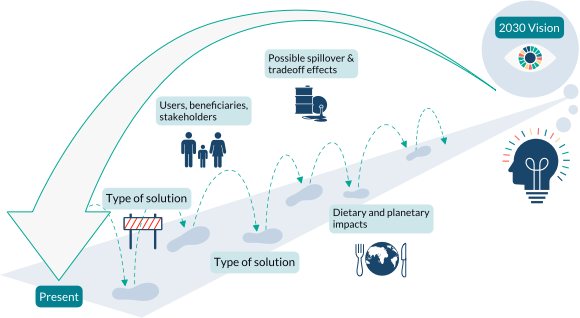Macroalgae (or seaweed) as food

Description of the innovative solution
Over 820 million people in the world do not have enough food to eat, and the number of undernourished people continues to rise. One potential alternative food source that could meet the dietary demands for both for humans and animals is algae. Algae is not a new invention, it has been used as food for thousands of years. The most commonly consumed macroalgae includes the red algae Porphyra (nori, kim, laver), Asparagopsis taxiformis (limu), Gracilaria, Chondrus crispus (Irish moss) and Palmaria palmata (dulse), the kelps Laminaria (kombu), Undaria (wakame) and Macrocystis, and the green algae...
Over 820 million people in the world do not have enough food to eat, and the number of undernourished people continues to rise. One potential alternative food source that could meet the dietary demands for both for humans and animals is algae. Algae is not a new invention, it has been used as food for thousands of years. The most commonly consumed macroalgae includes the red algae Porphyra (nori, kim, laver), Asparagopsis taxiformis (limu), Gracilaria, Chondrus crispus (Irish moss) and Palmaria palmata (dulse), the kelps Laminaria (kombu), Undaria (wakame) and Macrocystis, and the green algae Caulerpa racemosa, Codium and Ulva. These algae are usually harvested from wild populations or they can be farmed and consumed fresh, dried or pickled. Several macroalgae are also sources of hydrocolloids, such as agar-agar and carrageenan, which are widely used in the food industry as stabilizers, thickeners and gelling agents. Algae is not only considered a high-value source of protein for humans and livestock but it also plays a crucial role in the ocean’s ability to absorb greenhouse gases. In addition, this solution could improve water quality by extracting harmful nutrients, such as nitrogen from the sea. Thus macroalgae can play a key role in combating both food insecurity and climate change.
Examples and additional resources
Real-world examples
See this solution in action in different contexts and settings around the world
Additional resources
Learn more about this solution through studies, articles, business cases, and other information
SEAWEEDS AND MICROALGAE
Seaweed and Cardiovascular Disease
Contacts
Connect to others working on and with this solution around the world
Pathways to uptake
Engage with our “backcasting tool” to imagine and design “pathways to uptake” for this solution in your setting.
This process involves defining a future vision of this solution being used in your context, and then working “backwards” to identify necessary steps to achieve this vision by 2030. Going through this exercise as an individual or with a team can help to clarify the WHAT/WHEN/HOW of moving a solution (or package of solutions) towards having major impact. We hope these pathways will inspire outside-of-the-box thinking, creative approaches, and actionable concrete steps to move ideas into action.
Pathway builder
Explore pathways for this solution
Be the first one and add a pathway for this solution!